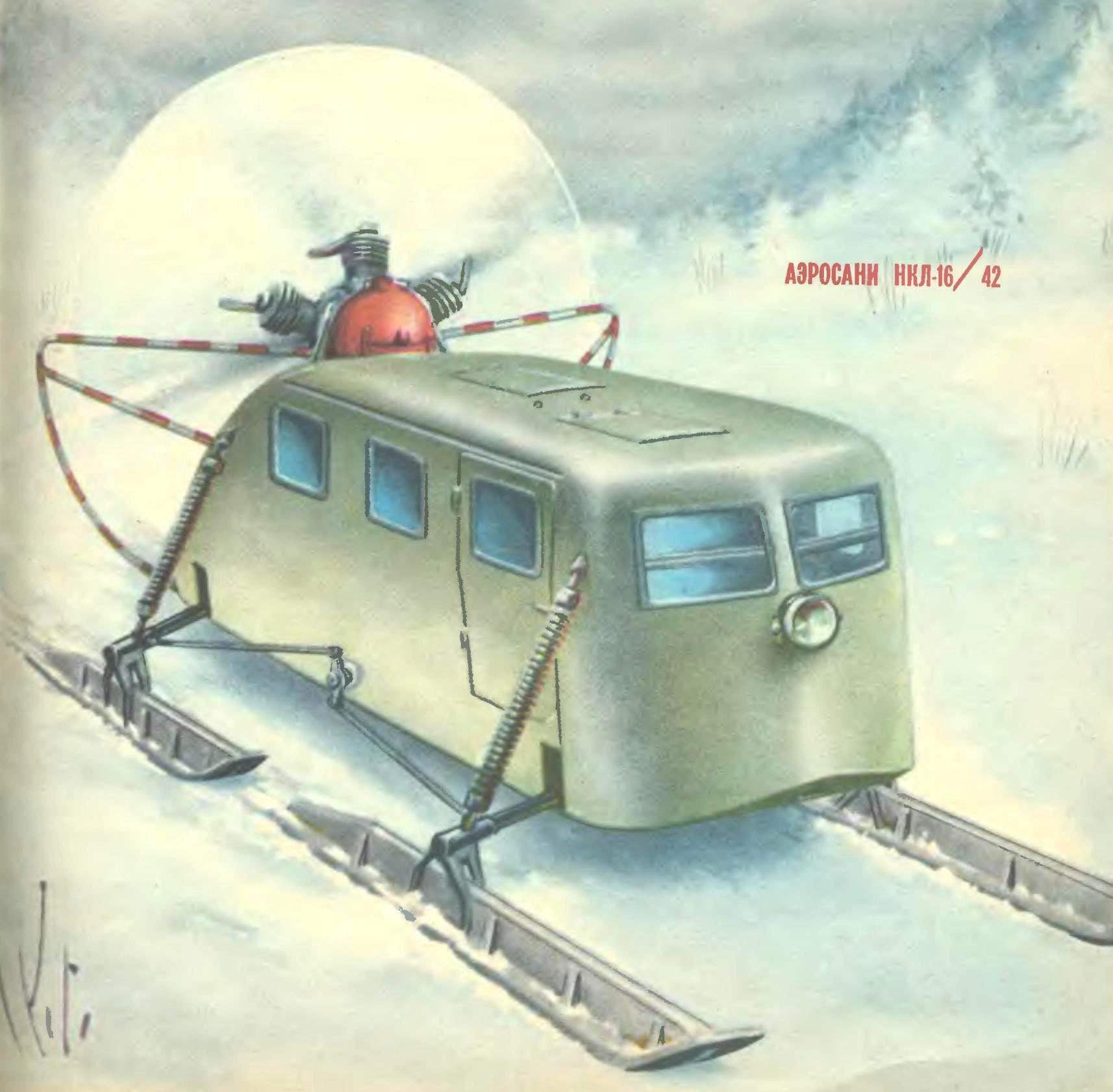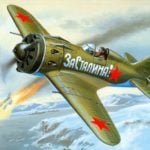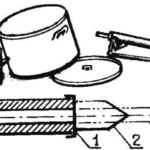
 The first option trehlistnyj snowmobiles NLK-16, made in 1937, under the leadership of chief designer N. M. Andreev, produced commercially in the transport and sanitary design. The improved model of the machine, made by chetyrehstennoy scheme and the designation of NKL-16/41, released in 1940-1941. In 1942 the sleigh to a much improved version was produced under the symbol NKL-16/42. About them our story.
The first option trehlistnyj snowmobiles NLK-16, made in 1937, under the leadership of chief designer N. M. Andreev, produced commercially in the transport and sanitary design. The improved model of the machine, made by chetyrehstennoy scheme and the designation of NKL-16/41, released in 1940-1941. In 1942 the sleigh to a much improved version was produced under the symbol NKL-16/42. About them our story.
The commercially produced snowmobiles of all types, including NKL-16, NKL-16/41 and NKL-16/42, widely used on the fronts of the great Patriotic war, especially in the winter of 1941/42. They were used for rapid communication, the delivery of military supplies, they have carried out the patrol, amphibious and combat operations. During the transfer of the landing force snowmobile not only took soldiers with full armament on Board, but towed on special cables 18-20 skiers. In combat they are on the sides of the towed towed scrapers, in which were placed soldiers with a machine gun and the second number of the calculation with the necessary ammunition. In addition, the fire could lead through the opening in the hull top hatches sitting in the car the soldiers.
Picked we transport battalions successfully performed numerous tasks command of the Soviet Army on intelligence and communications, and also worked with units fighting snowmobiles — NKL-26. This allowed not only to carry out unexpected enemy raids for the destruction of manpower, but also to promptly drop off the landing group to consolidate captured enemy strongholds and territories.

Fig. 1. The appearance of the NKL-16/42:
1 — the towing bracket. 2 — wild boar front of the ski, 3 — headlight, 4 — spring, 5 — windscreen 6 — housing, 7 — the hatch front, 8 — rear hatch, 9 — brace motor frame, 10 — fairing, oil tank, 11 — fencing of the propeller 12 — propeller 13 — exhaust pipes, 14 — engine M-11, 15 generator 16 motor frame 17 — the mount of the rear spring strut in a motor frame 18 — rear strut, 19 — rear ski, 20—. axis of the ski, a 21 — wild boar rear skis 22 — mount the axle shaft on the case, 23 — fuel tank 24 — the door of the cabin, the 25 — time control, the 26 — thrust control 27 — the driver’s door, 28 — front strut 29, the brake mechanism 30 to the front drive axle, 31 — ski, a 32 — node mounting of the front spring struts on the body, 33 — gimbal mount axes.

Fig. 2. NKL-16/42.

Fig. 3. Installation of Pitman arm steering.
NKL-16/42 was made to increase the internal volume of the cab and more convenient placement of the fighters — with sides, having the outer bulge. This gave the opportunity to expand the cabin (compared with the NKL-16/41) of more than 100 mm, petrol tank placed inside the casing in its rear part (it was separated from the cabin removable bulkhead). Front housing (front side) is rounded. Suspension struts are longer, and the node of attachment was made on the brackets welded to the posts of motor frame. This unloaded case, as his back with this scheme is not supported by the struts in the front and was hanging on the bars of the engine frame, which increased the hull strength. Other design features of the NKL-16/41 and NKL-16/42 exactly the same.
The body of the snowmobile are made of a wooden frame — set of transverse frames and longitudinal stringers and covered with plywood. In the place of installation of the power units and attachment units of the machine is affixed reinforcing lugs with plywood inner brackets.
The front windshield is divided by a counter. On the starboard side are two opening window and glazed doorway to front door. On the left side of the window is cut just in front of the door. The rear door is wider, designed for the landing and soldiers with arms and load up the car with boxes of ammunition, barrels of fuel, etc.
All three doors case hung on external hinges and lock spring pin locks that prevent accidental opening while driving. Handles streamlined shape mounted externally on the rotary axis locks.
In the housing cover provided with two trap-door: front — right of the driver (above the neighbouring place), the rear — center of the case.
All skis are wooden, interchangeable. They are T-shaped, open, bracket-horn, made of angled iron uprights welded to the reinforced edges of the sleeve. The sole of the ski, made of plywood and clad outside with steel. Longitudinal — top longitudinal edge of the ski is of pine boards, fastened to the sole with metal corners and legs formed the uprights of the pylon.
On the sole of the ski has a metal undercuts the sustainability of the progress of the snowmobile and to prevent skidding of the machine and sideslip. All skis are equipped with braking mechanisms of the nail type. Control cable, single-sided, separate. The left brake pedal, mounted on the floor in the cab actuates the brakes the rear of the ski, the right pedal is the brake in the front.
All skis have independent suspension. Bushings hogs they are put on the ends of the rod and fixed by caps, which are inserted in holes in the cap and axle rollers. Mount the axles to the hull performed on the universal joints. The outer ends of the axle near the Bush pig have lugs for connection traction control, simultaneously performing the role of an unloading brace.
In the same place on the axle made and the second eyelet for connection with the bottom bar of the shock absorber. The absorbers are made with two springs — the main and reverse. The upper strut end ball joints and attached to nodes of their suspension collar nuts. On the NKL-16/42 rear struts have a greater length than the front.
The direction of movement of the snowmobile and the simultaneous rotation of all skis are steering wheel placed on the left side of the fly. Management of mixed-type cable and with the help of rods.

Fig. 4. The placement of the controls in the cab:
1 — seat, 2 — body, 3 — wiring electric, wiring, 4 — counter of revolutions of the engine crankshaft, 5 — folding windscreen, 6 — the switch of ignition, 7 — the indicator of air pressure in the fuel tank, 8 — gauge oil pressure in the system 9 — hand-starting magneto, 10 — air pump, 11 — the brakes the rear of the ski, a 12 — foot pedal throttle control of the carburetor (gas), 13 — column of rollers, 14 — the brakes of the front ski, 15 — control cables.

Fig. 5. The heater air inlet in the carb:
1 — pipe mounts to the cylinder 2 is a flange connecting the heater to the carburetor, a 3 — funnel, 4 — housing, 5 — baffle, 6 — nozzle exhaust exit.

Fig. 6. Control circuitry ski NKL-16/42:
1 — front ski, 2 — swivel hub mounting axle shaft 3 — steering wheel, 4 — spool control cable to the steering tube 5 — steering cable, 6 — side cable rollers, 7 — column rollers, 8 roller lever actuator main shaft control, 9 — lever of the main shaft 10, the roller block 11 — rear axle shaft, 12 — rear ski, 13 — control rod rear ski 14, the main steering shaft, 15 — fry (left), 16 — control rod front ski, 17 — adjusting thrust plug.

Fig. 7. Ski and its braking device:
1 — cutting, 2 — tape podraza, 3 — through-rivets, 4 — plywood sheathing of the spar 5 spar 6 — rack of wild boar, 7 — brake, 8 — lug spring. 9-the Bush pig, 10 — reinforcing the rim of the sleeve, 11 is the brake cable, 12 — gon fastening of the spar, 13, 14 — bolt mount, 15 — back spring brake 16 and brake 17 — window, brake lever, 18 — axis brake lever 19 — a reinforcing strip 20 — bolt mount podraza, 21 — sole ski (steel), 22 — tape fastening soles, 23 — longitudinal reinforcing lining soles 24 soles of skis (plywood).
The steering wheel is planted on the steering tube, which has a drum with grooves for winding soft steering cable. On the drum the cable is fixed with a clamping roller. Further the cable through the Fairlead goes to the main shaft located on the floor in the center of the cab of the snowmobile. To reduce stress when turning the system cables introduced dual roller unit. On the main shaft installed oneplace lever with column clips on his head. Cables pass through this block and the swinging roller placed in the rear part of the housing. On the main shaft, on the outside on the sides of the machine, installed duplica fry, which are connected rigid tubular rod fork threaded lugs connecting the bipod with the axes of the suspension skis. Due to the threaded lugs adjustable length rods and the parallelism of the skis relative to the longitudinal axis of the machine. For simultaneous rotation of the skis (and they have to turn in different directions) rod fry main shaft mounted in the following way. Right traction control front ski is attached to the upper lug bipod, and right back to the bottom eyelet.
The left hand the mutual position of the bipod to the left of the reverse.
The speed changes only due to the frequency of rotation of the propeller, i.e. the crankshaft of the engine. For this is the pedal “gas” pedal in the driver’s cabin (located between the brake pedal) which is connected to a cable with the throttle valve of the carburetor of the engine.
In the driver’s cab has two seats. Left during car — driving — regulated under growth sitting on it the person on the right is a passenger. In front of the driver is a dashboard with a pointer devices, switches, lights, ignition switch on a magneto engine, hand starting magneto air pump and air three-way tap fuel system and push-button electric starter to start the motor.
The starter and generator are mounted on special brackets on the left and right at the bottom of the engine.
Between the bushing of the propeller and the disc is scivac with machined in it a groove for V-belt. This belt was carried out by the drive generator.
Exhaust pipes of the cylinder — individual.
They are at the ends of the oblique cuts, which are arranged in the flow of oncoming air.
Due to the cutoff when driving the snowmobile is an intensive suction of exhaust gases, which improves the scavenging of the combustion chamber and increases its content fresh working mixture.
The engine is mounted on under engine frame, to the ring which he attached special bolts. The frame is a welded spatial farm. In the lower part it ends with two fork eyes; in them she fastened to the lugs of the power units of housing. The front (in the direction of the snowmobile) to the uprights of the frame welded lugs, it is connected to the thrust struts of the frame.
The thrust struts to the second end also attached to the nodes on the body, forming two more points of its attachment. The struts are placed on the transverse tube on which hung the oil tank. The tank is filled the oil reserve needed to ensure the operation of the engine.
Petrol tank is fixed on a special cradle steel tapes. To tighten the belts feature a threaded coupling. Tank construction riveted, galvanized iron. The seams and riveted joints are sealed. The tank has a neck, closed sealed, zavertyaeva on the threads of the stopper.

On the shank of the crankshaft of the engine is mounted a two-bladed wooden propeller — Blades at the ends and working the edge have metal fittings. On the engine the screw is fastened through the intermediate part — the propeller hub. The screw is clamped with bolts between the flanges of the sleeve. It is mounted on the tapered shank of the crankshaft on the dowel, tighten the castellated nut and splinters.
To ensure the safety of the zone of rotation of the propeller protected by a tubular farm fence, screw the Fence is painted bright red paint.
I. USENALIEV



